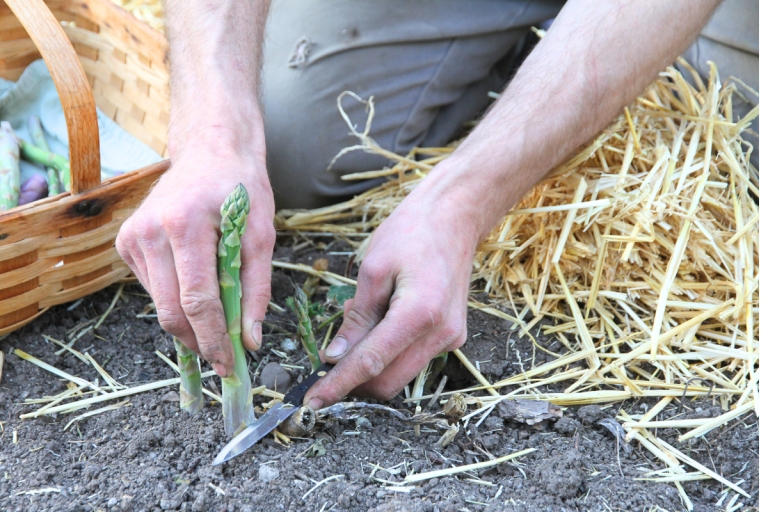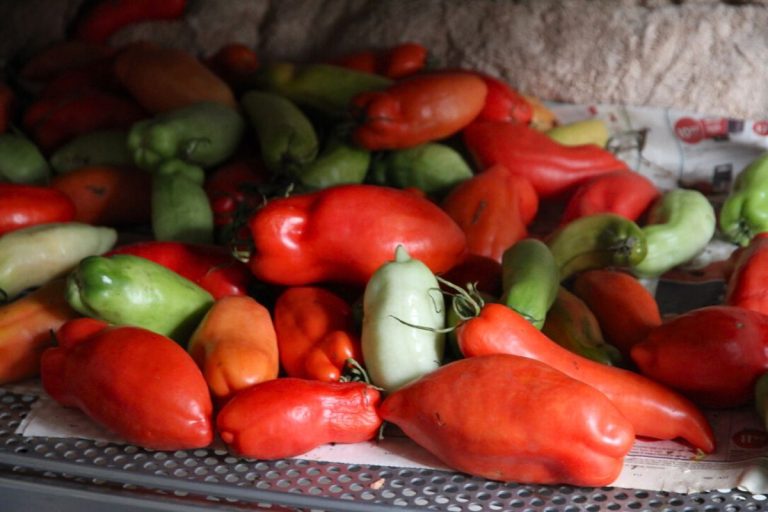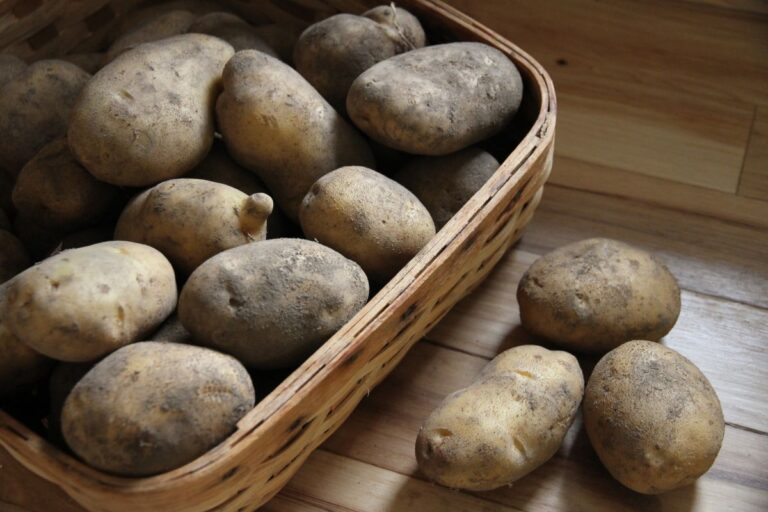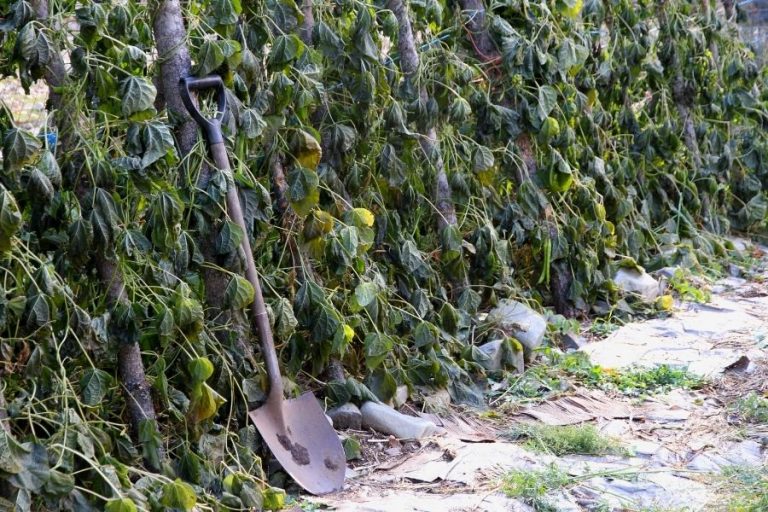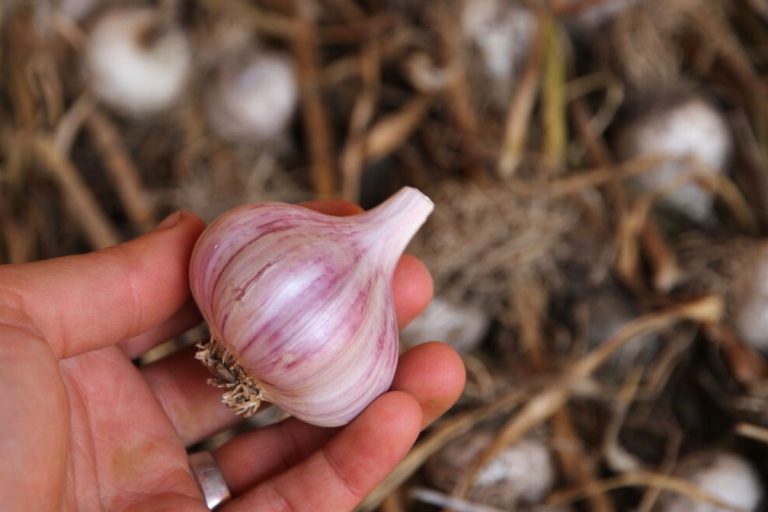Your Guide to Curing, Storing and Using Pumpkins
Learn how to harvest, cure and store pumpkins, so you can use them all winter in your cooking and baking.
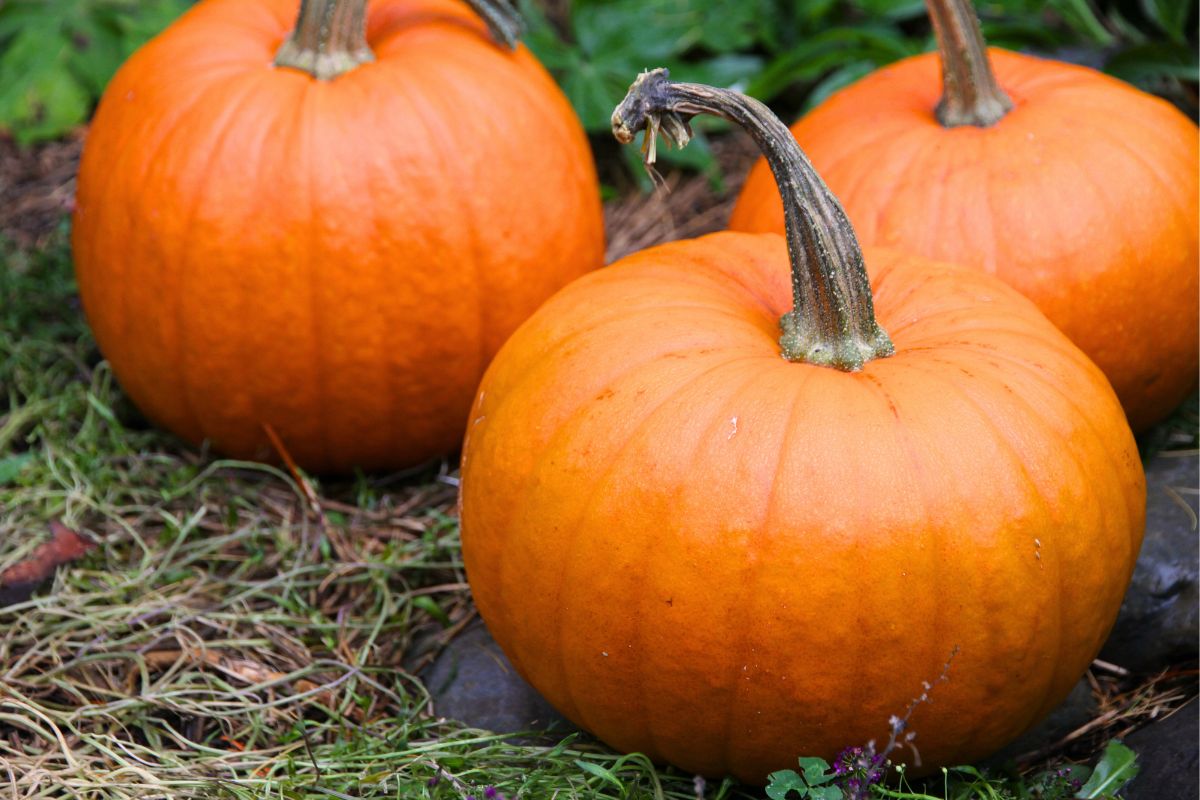
Pumpkins are one of the easiest vegetables to grow in my northern gardens.
The seeds are large, easy to handle and can be directly sown in the garden soil after danger of frost has passed. Seedlings are hardy when they appear and grow rapidly, until the pumpkin plants are spread all over my garden!
If I had a bone to pick with pumpkins, it would be their rambling habit. Pumpkin vines can take a lot of space, and they often get tangled up with other vegetables.
So while I like growing pumpkins, I don't always do it. Some years I like to focus on growing extra potatoes, carrots or beans. When this happens, pumpkins get the boot (meaning I don't plant them).

Vine borers aren't a problem here, so local farms always have a bountiful pumpkin harvest at the end of the season. I can buy them for cheap, or even get them for free.
Home grown or bought from a local grower, I like keeping whole pumpkins on hand throughout the winter months for roasting, homemade pumpkin pie, pumpkin muffins and more!
It's not hard to do.
Pumpkins will keep for months if you choose a storage variety, cure the fruit properly and store it under the right conditions.
And I'm going to show you how to do these three things!
Best Pumpkin Varieties for Winter Storage
You can store any type of pumpkin for a few months, but some have a longer storage life than others.
Generally speaking, pumpkins with the latin name cucurbita maxima or cucurbita moschata have harder shells and can last 6+ months in proper storage (you can check for latin names on your seed packet).
Here are some different varieties of pumpkins that will store well.
- Futtsu Black
- Jarrahdale
- Long Island Cheese
- Queensland Blue
- Moranga
- Musquee de Provence
- Rouge Vif d'Etampes
- Triamle

What about sugar pumpkin, baby bear and all the "pie pumpkins" out there?
These fruits fall into the cucurbita pepo family, and have excellent flavor. But they are thin skinned and only average 2-3 months in storage.
Field pumpkins (typical Jack O' Lantern type) you find at the pumpkin patch or grocery store usually falls into the c. pepo family as well.
Most of the time, field pumpkins are thin skinned. But unlike pie pumpkins or sugar pumpkins, they have bland flavor that most folks don't care for.
Helpful tip: field pumpkins make great food for livestock or poultry. I even know a local farmer who sells pumpkins to a dog food company!
When to Harvest Pumpkins
Growing your own pumpkin and winter squashes can be a rewarding experience! After sowing pumpkin seeds, you get to sit back, watch and wait (make sure you mulch around the plants, so you don't have to weed!).
You'll see male and female flowers develop. If the female flowers are pollinated, tiny green balls will form and swell over the following months. Eventually, pumpkin skins will start changing color as a sign of maturation.

If you want flavorful flesh, it's a good idea to leave pumpkins on the vine as long as possible. Vine-ripened pumpkins are sweeter, and the outer shell is usually hardier for having ripened on the parent plant.
Pumpkins can withstand a light frost that only kisses the top of the vine's leaves. But if you have a heavy frost in the forecast, go ahead and harvest all the ripe fruit. Heavy frost will damage the shell of your pumpkins, and they won't last as long in storage.
Helpful tip: underripe pumpkins won't develop full flavor even if you bring them indoors. Use immature fruit for ornamental pumpkins in your home decor.
How to Harvest Pumpkins
There's only one thing you need to know when taking pumpkins for winter storage! Always harvest pumpkins with at least 2 inches of stem attached.
You can use a sharp knife to cut the stem where it attaches to the vine. Pruning shears make the job even easier.
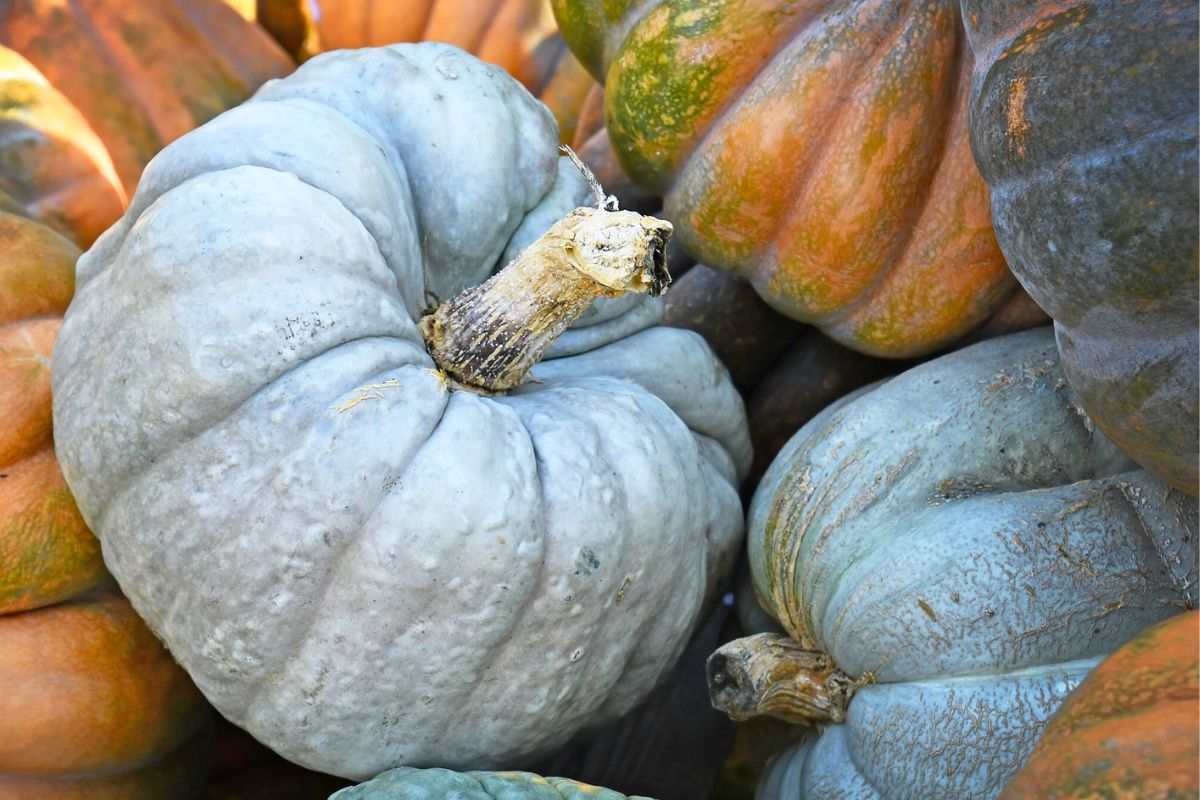
Helpful tip: if you accidentally break stems off of your pumpkins, you can still put them in storage. Just be sure to use these fruits up first, so the open wound doesn't have time to mold or decay.
Easy Ways to Transport Pumpkins
Mature pumpkins are quite large by the time harvest season arrives. It's a good idea to use a wheel barrow or wagon to haul them in from the garden.
These orange fruits are tougher than you think! You can stack them 3-4 layers deep, without doing serious damage. Just don't throw or drop your pumpkins.
Stack 'em up and haul pumpkins away to wherever you're curing the fruit!
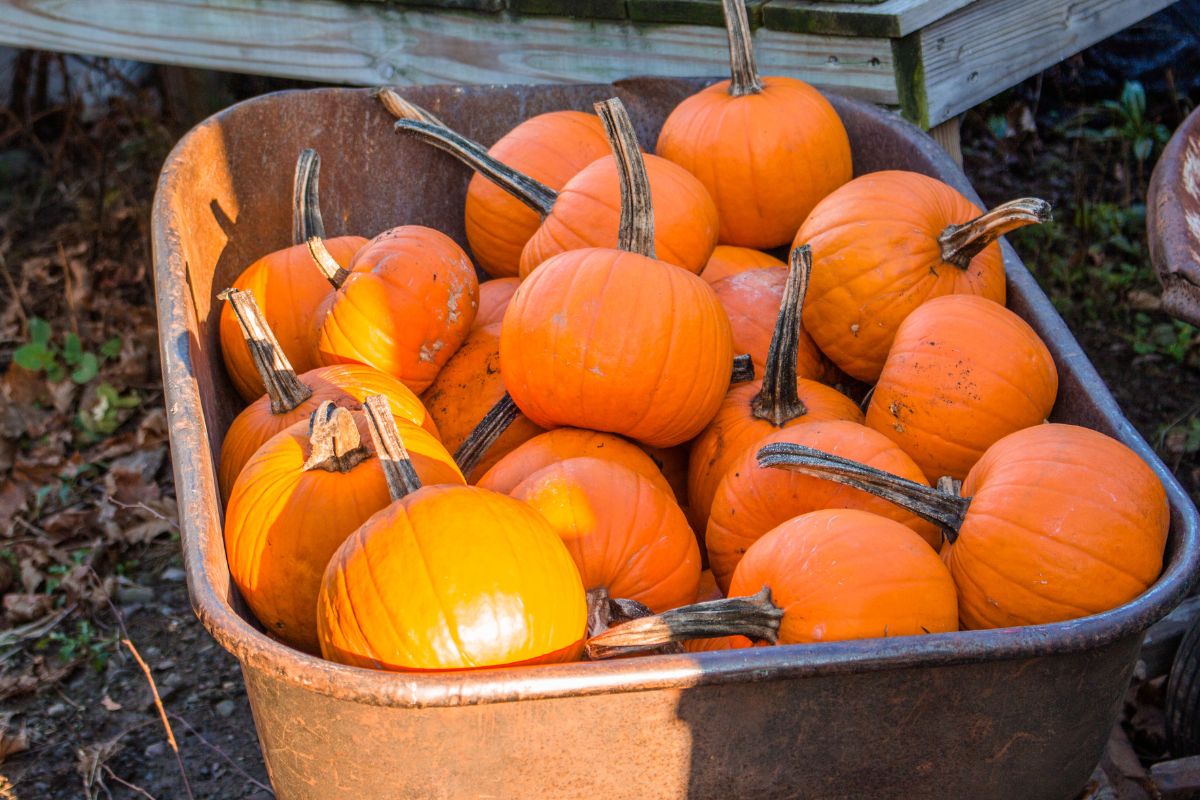
Best Way to Cure Pumpkins
Curing is a simple process that gives pumpkins time to heal any scratches, dings or cuts they received during harvest. If your pumpkins are "healed" when you put them into storage, the shell and stem will act as a barrier to moisture, oxygen and decay.
It's easy to cure pumpkins.
- Choose an out-of-the-way place in your home that is room temperature (60-70F or 16-21C) with good air circulation.
- Pumpkins cure best on hard surfaces (a concrete floor or wood shelf).
- Spread pumpkins out in a single layer with space between each fruit.
- Let your pumpkins sit for 10-14 days, or until all scratches, dings and nicks have healed over.
- Brush pumpkins with a cloth to remove any bits of grass or dirt before storing.
Helpful tip: don't know how to tell when pumpkins have healed themselves? Find one with a fair-sized scratch or gouge. Use it as your gauge and when it scabs over, you can assume the others have healed as well.
Before the curing process, some folks like to wipe their pumpkins with vinegar and water, or even a bleach solution. Unless your pumpkins are terribly filthy, you don't need to bother with this.
Let them dry, and then use a cloth to gently remove dry dirt.
Where to Store Pumpkins Long-Term
When it comes to pumpkins and long-term storage, most folks think colder is better. But it just isn't so. Like onions and garlic, pumpkins actually decay faster in near-freezing temperatures.
Here's what you want in an ideal storage place.
- A dry location (pumpkins will rot faster in humid conditions)
- An out-of-the-way place where pumpkins are easy to access, but can sit undisturbed.
- Pumpkins do well on a hard surface where the entire shell can breathe and won't condensate.
- A room with good ventilation.
- Temperatures of 50-55F (10-13C).
- A semi-dark place.
Pumpkins can be kept in a large pantry, an entryway, attic or you can even store them on a kitchen shelf (just don't store them directly above the stove or sink where they'll be hit by moisture).
How to Store Pumpkins
Before you store your pumpkins, cover the area with a layer of brown paper (I like to use paper grain sacks for this). Because liquid spreads more on paper, you'll be able to detect signs of decay much faster than if you just put pumpkins on a wood shelf!
Set out individual fruits, leaving about an inch of space between each pumpkin. Keep them an inch away from walls as well.
Fruits that touch a wall or another fruit are bound to rot faster!
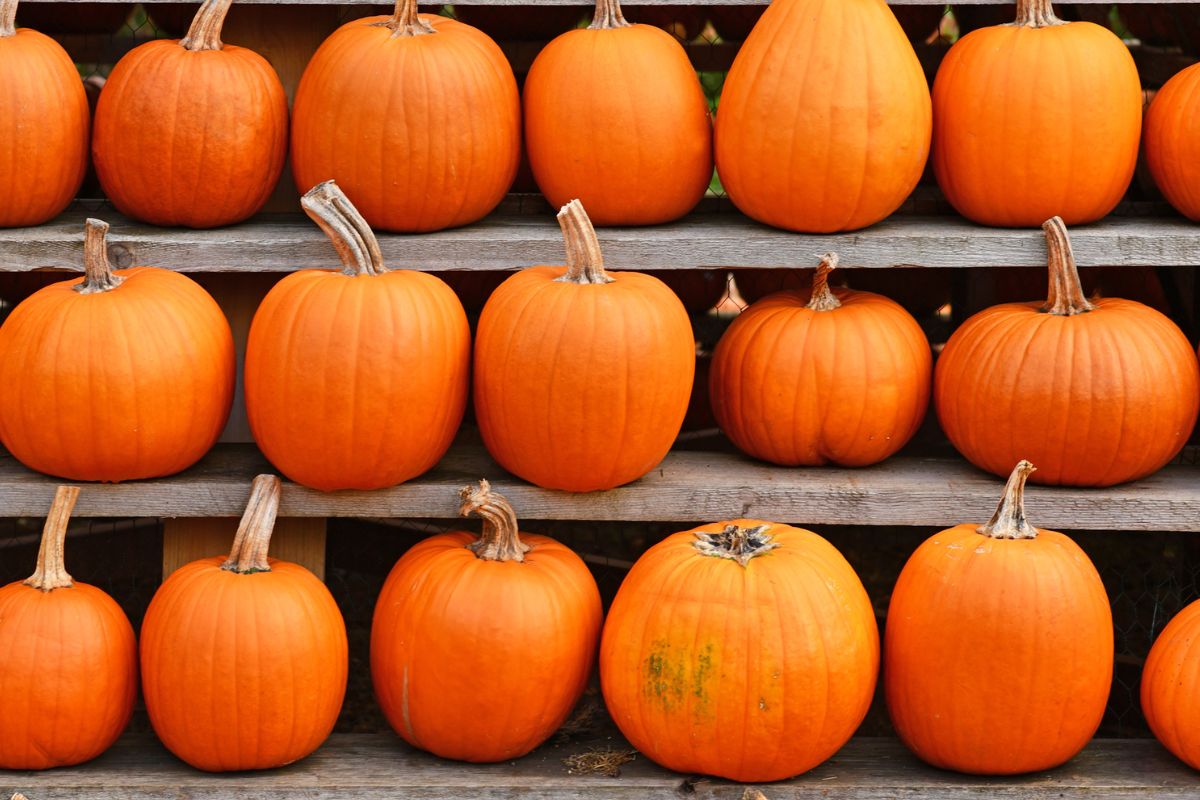
How to Check Pumpkins for Spoilage
Pumpkins often spoil from the underside, which makes it easy to miss the decay. It's a good idea to check them every 1-2 weeks.
Once 3-4 months have passed, check them more frequently. Black or white spots are a sign of mold, and moisture seeping out from underneath a pumpkin is never a good sign. Use these fruits immediately (unless they're unsalvageable).
In that case, you can send them to the compost, or feed them to your farm animals.
How to Preserve Pumpkins
As the winter draws to a close, your pumpkins will start to show signs of decay, and you either have use them, or lose them.
Here are two great ways you can preserve pumpkin.
Bake a whole pumpkin in the oven and freeze the flesh.
Start canning pumpkin at home for quick and easy pumpkin puree.
Old Fashioned Pumpkin Recipes
Here's an accumulation of recipes (not mine) that you'll probably enjoy putting to use when you have all those winter storage pumpkins on hand!
Old Fashioned Pumpkin Sugar Cookies
Old Fashioned Pumpkin Gingerbread Cake
Best Roasted Pumpkin Soup Recipe
Questions Folks Ask
What's the difference between pumpkins and winter squash?
It can be confusing when you are choosing garden seed, or buying pumpkins from a produce stand. Often you'll find the exact same fruit listed as pumpkin by one source, while the next resource has it in the winter squash category!
Truth is, pumpkins are actually a type of winter squash.
Some might even call it a sub-category of winter squash.
If you want to get into winter pumpkins, take time to learn the names of varieties so you can identify them yourself.

Where can I buy winter pumpkins?
If you want pumpkins for winter keeping but didn't grow your own, you can often find heirloom storage varieties at local farms, the farmer's market or produce stands.
Can I put store-bought pumpkins in storage?
Pumpkins at the grocery store can be put into storage. But chances are, they've had rougher treatment than pumpkins you grow and harvest yourself. Just be aware they probably won't last as long as homegrown pumpkins!
